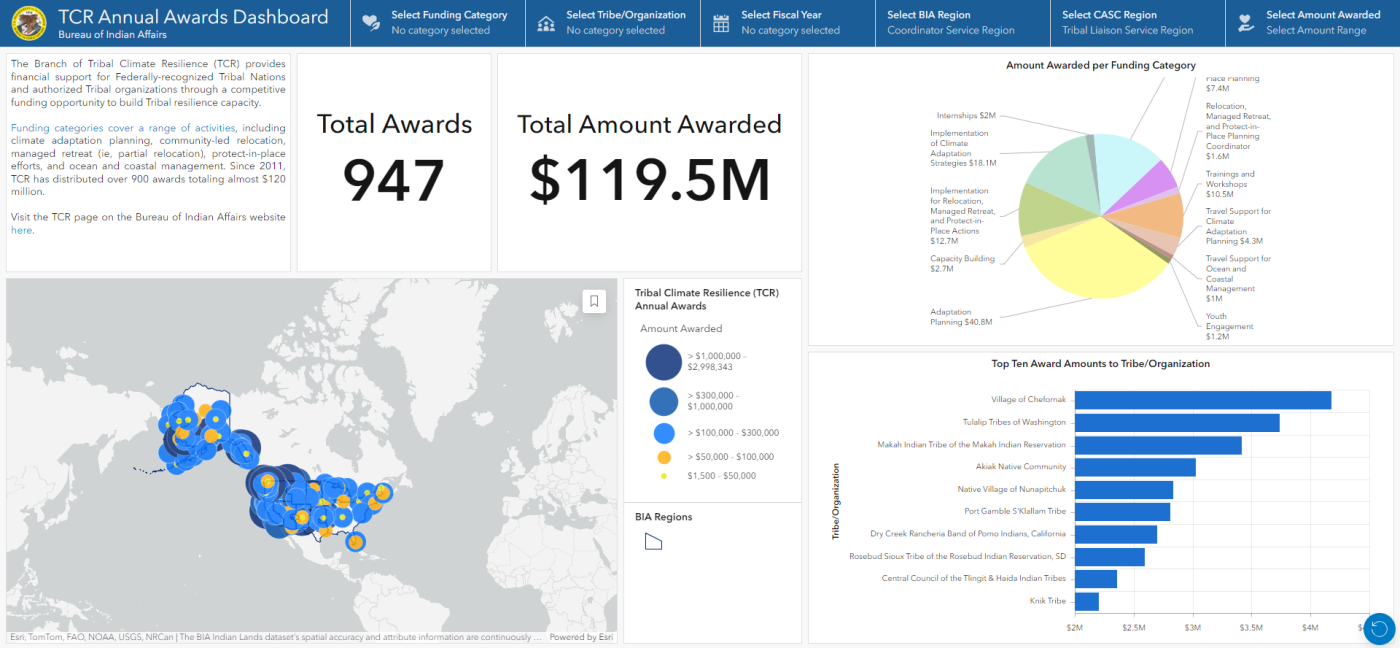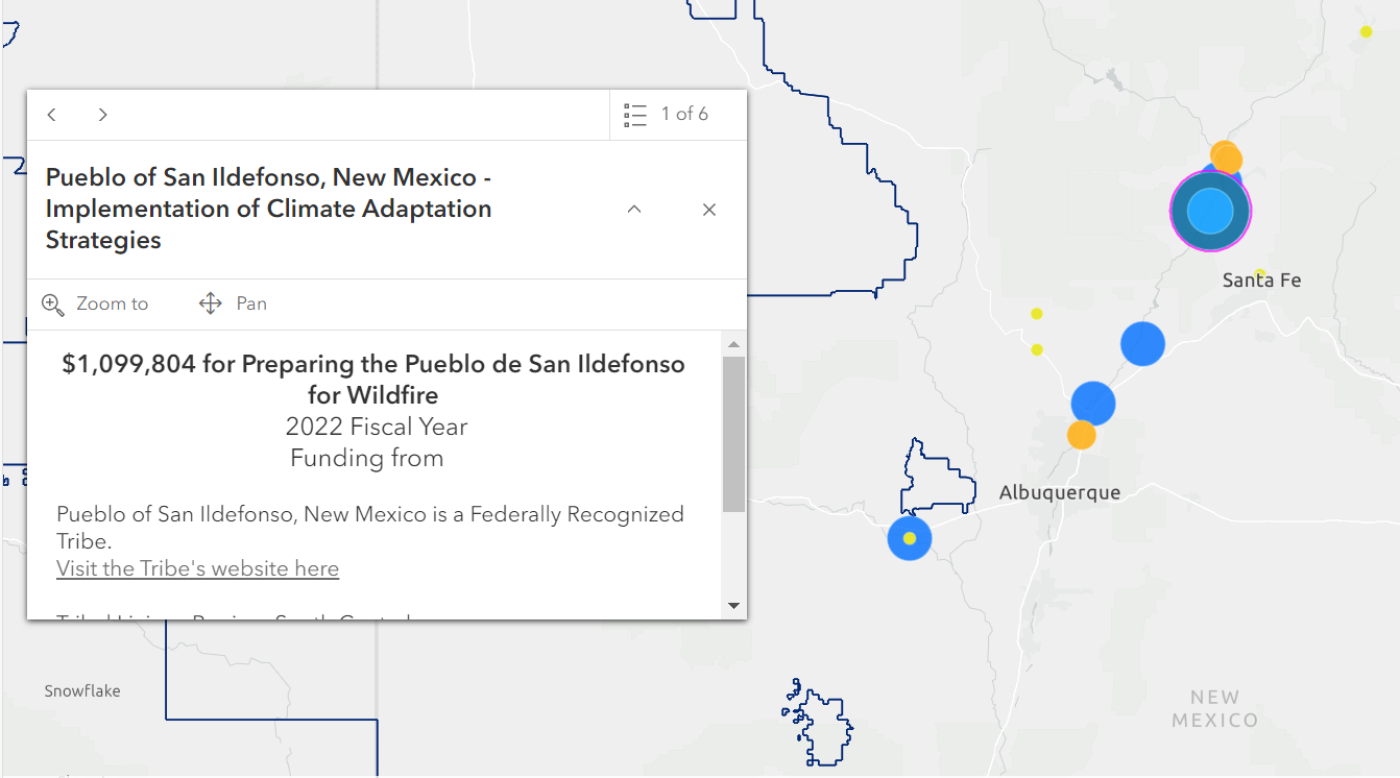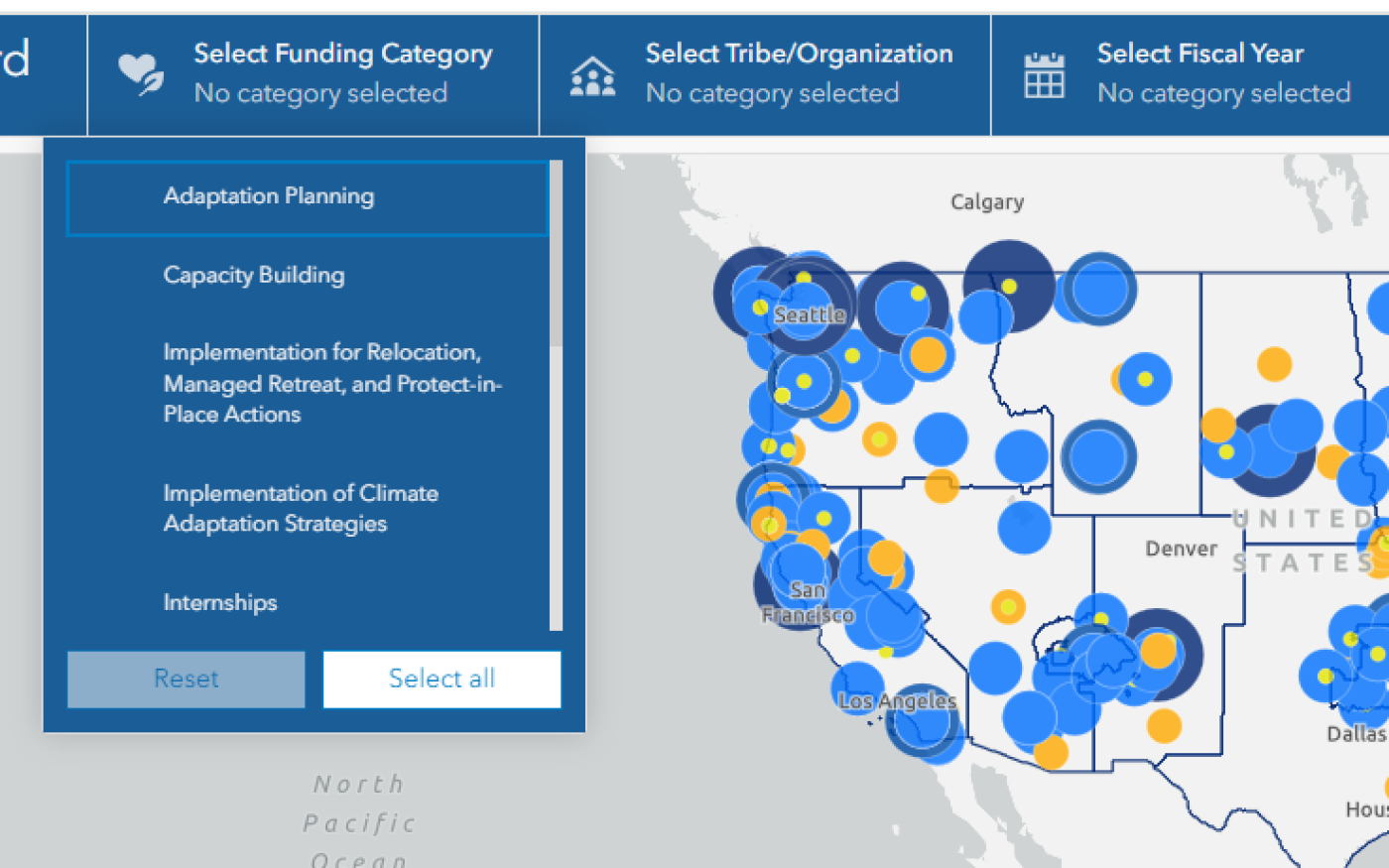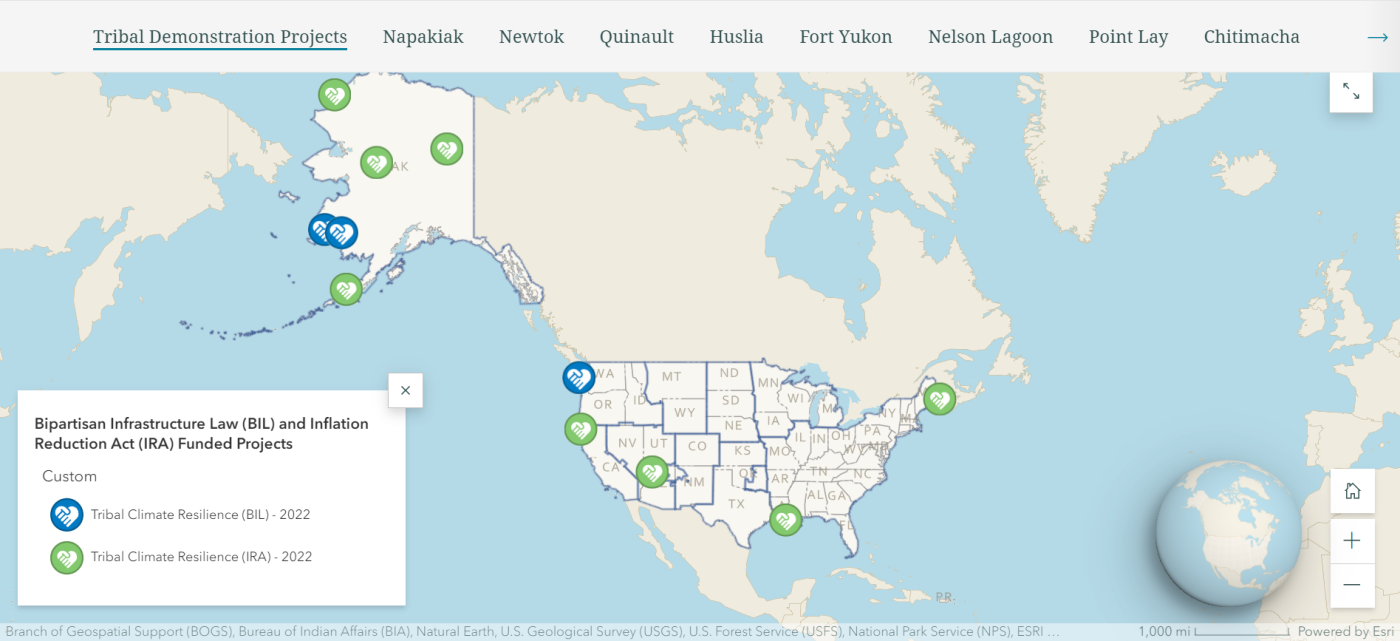Tribal Community Resilience Annual Awards Dashboard

The Branch of Tribal Community Resilience (TCR) Annual Awards Program provides financial support for federally-recognized Tribal Nations and authorized Tribal organizations through a competitive funding opportunity to build Tribal resilience capacity.

With the TCR Annual Awards Dashboard you can view a map of all annual awards program recipients since 2011 across the US and click on any award to learn more about the project, the Tribe or organization undertaking the project, when the project began, and how much funding the project received.

The TCR Annual Awards Dashboard also shows cumulative data on which funding categories have received the most grant money over time, as well as which Tribes or organizations have received the most award funding.

You can also use the TCR annual awards dashboard to search and filter projects that have received awards by what years the project received funding, funding category, Tribe, and region.
Tribal Community Resilience Community Driven Relocation StoryMap

The Bureau of Indian Affairs Voluntary Community-Driven Relocation Program provides funding to Tribes severely impacted by environmental threats to pursue relocation, managed retreat, protect-in-place efforts, and adaptation planning.
The Community-Driven Relocation StoryMap includes descriptions of all 11 demonstration projects. You can learn the story of the Tribal community undertaking each project, the environmental impacts they are facing, and their plan to relocate, adapt, and prepare for the future.
Contact Us
Albuquerque, NM 87104


